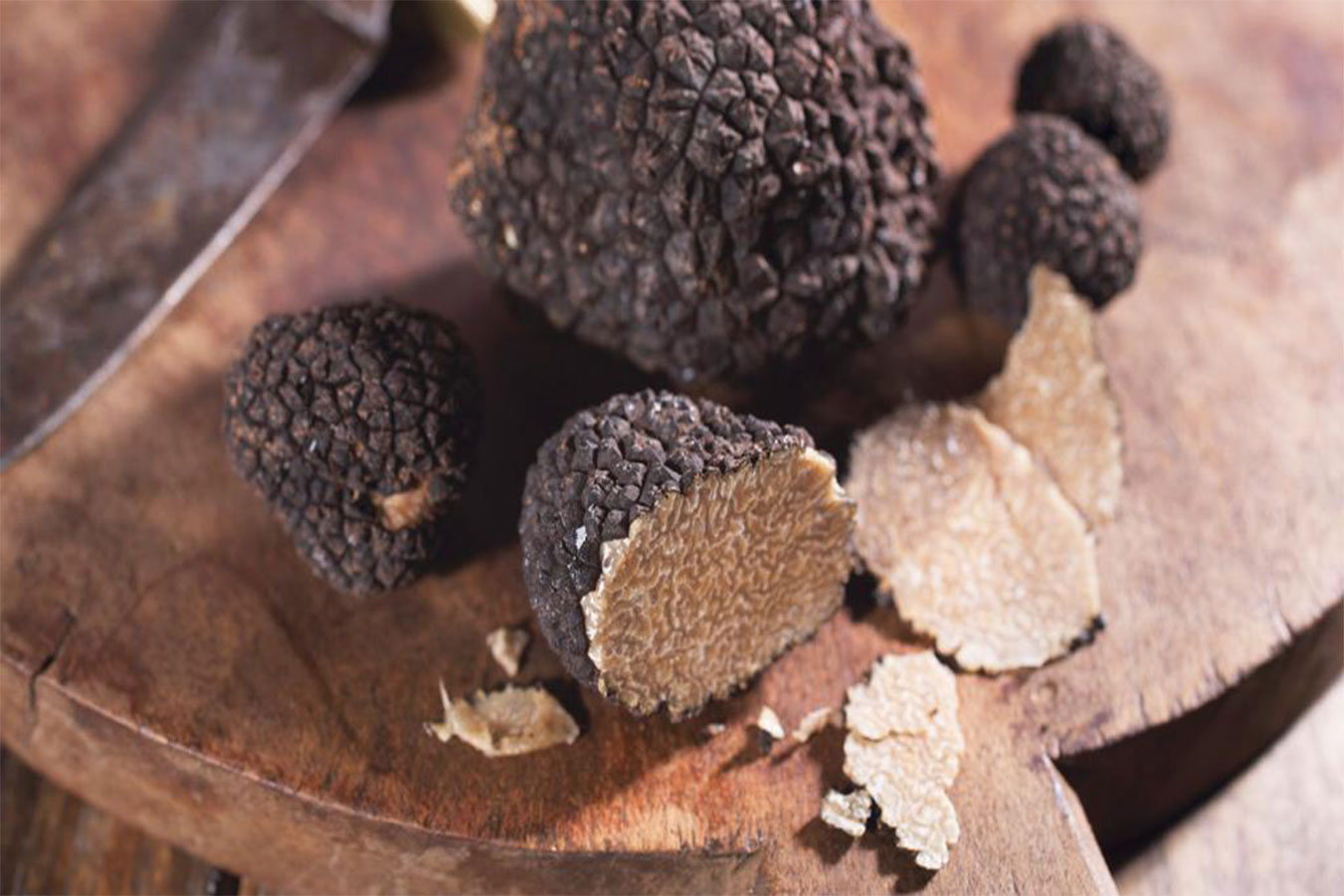black diamond truffles

Separated as if from another world, the fascinating aromas of these delicacies will add flavor to your meals, offering a special atmosphere, like a royal feast.
Truffles grow mainly in the forest, in the soil, under thick layers of dead leaves, at a depth between 5-40 cm, but can also be found up to 50 cm deep.
Truffles or as we like to call them "black diamonds" are the most special, the most refined and the most expensive natural delicacies. These are underground mushrooms with higher nutritional value than any other plant or mushroom. It is rich in proteins and mineral salts as well as organic acids, fats and carbohydrates.
Truffles appear in spring - summer in April-June, and in autumn - winter in September-December.
Truffles produce a volatile alcohol whose musky scent acts as a sex hormone and whose chemical formula is similar to that of testosterone. The species of truffles identified on the territory of the country, which are of commercial and culinary interest.

Black winter truffles are available from late November or early December to late March or early April, depending on the climatic conditions in the region. The interior of the truffle is veined dark brown to black as the season progresses. These truffles have a unique, rich, complex, intense chocolate flavor and an unforgettable flavor. Period: November-March.

Round shape, deeper smell, dark color on the outside, and reddish-brown or chocolate color with a marble appearance on the inside. By sectioning we notice the difference in color between Tuber Aestivum and Uncinatum but the aroma is very different, stronger in Uncinatum. Period: September-December.

It is also called the queen of truffles. It is the most valuable truffle due to its aroma and properties. It also only grows in certain areas for a short period of time and is difficult to find and harvest due to the depth at which it grows. It is a special truffle, very sensitive, its shell not being as thick as other types of truffles. It has an intense smell and a creamy brown color on the outside and reddish-white on the inside. Period: November-January.
Truffle farming
The largest truffle plantation is in Spain, at Naveleno, in the province of Soria. 330,000 truffle mycorrhizal saplings are planted there, on an area of 600 hectares of land.
Worldwide, the demand for truffles is constantly increasing, while the supply is decreasing, due to the harvest that brings variable results. For this reason, French researchers are looking for ways to clone black truffles.
Exploatarea trufei se dezvoltă și în România unde au fost făcute câteva invesții în culturi de trufe, această activitate devenind în timp o afacere tot mai profitabilă. Trufa din România are un gust calitativ superior celei recoltate din alte țări, cea mai mare parte a recoltelor de trufe din România exportându-se în Italia.
Speciile de trufe identificate pe teritoriul tarii, care prezinta interes comercial si culinar.
Black truffle
White truffle
Preservation of Truffles
Before using fresh truffles, they must be washed under running water with a brush to remove traces of soil. We recommend that you wash only the amount of truffles that you are going to use because, once washed, they deteriorate faster.
Truffles continuously emit aroma, until exhaustion. And exposure to air does nothing but speed up the process. At the same time, the truffles naturally dehydrate. So, you have to give them special care to make them last as long as possible. As much as possible, meaning they can be stored fresh for up to 10 days.
Whole frozen truffles, on the other hand, are sliced or grated over dishes without being thawed beforehand. The lifespan of the truffle depends on its maturity at the time of purchase, varying between 7-12 days.
You can keep the food you want to use in the dishes overnight in the fridge, next to the truffles. All in an airtight glass or ceramic container. They will lend the aroma and the taste will be more intense..
We invite you to contact us through the attached form. We receive questions, recommendations and collaboration proposals. We will answer you as quickly as possible.